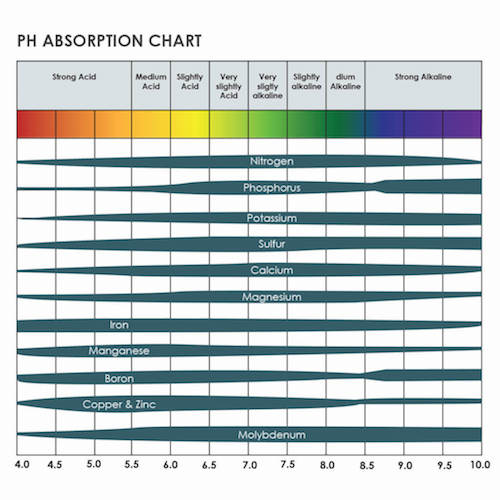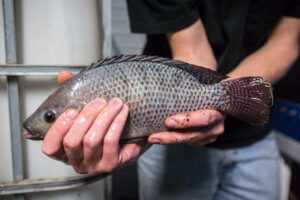This post is a look at an upcoming free resource soon to be available on the Upstart University shop. Please enjoy this information—a preview of a resource that will serve as a quick reference guide printable and readily available in your aquaponic farm!
Nutrients and water quality
The following are recommended nutrient concentrations in aquaponic systems. Remember that your system is unique, and your optimal concentrations may vary slightly from those listed below.
- Nitrogen levels:
- Ammonia: Less than 2 ppm
- Nitrite: Less than 1 ppm, ideally less than .5 ppm
- Nitrates: up to 160 ppm
- Recommended test kit: API Freshwater Master Kit
- Calcium: 40–70 ppm
- Carbonates: under 250 ppm
- Phosphorus: 10–20 ppm (vegetative crops), 20–40 ppm (fruiting or flowering crops)
- Sulfur: >60 ppm (depends on your system)
- Zinc: .03–.05 ppm (any higher is toxic to your fish!)
Use the Deficiency Key to diagnose deficiencies.
pH in aquaponics
The suggested pH range for aquaponic systems is between 6.3–6.7. pH is important to monitor as it is one of the most crucial factors in influencing whether or not nutrients are available in your system.
- Raise pH: with hydrated lime, potassium hydroxide or other simple hydroxides.
- Lower pH: by letting microbes drive it down (the byproduct of nitrification is hydronium ions, H+).

Don’ts:
- Don’t use water softeners!
- Don’t use hydrochloric acid or lemon juice!
- Don’t use dolomitic lime. It’s not as soluble and contains carbonates.
- Don’t use system components that make from galvanized steel—zinc can kill your fish.
- (Do use hydrated lime. It’s a soluble powder.)
Aquaponic fish
 Stocking density: shoot for 1 lb of fish for every 8–10 gallons of water in your system
Stocking density: shoot for 1 lb of fish for every 8–10 gallons of water in your system
Fish feed
Feed .75%–3% of body weight per day (.75% if feed is high protein) or to satiation a few times per day.
Recommended feed: Skretting (high protein, good quality brand)
Steps to fishless cycling:
- Add ammonia slowly until it measures at 2 ppm, then stop.
- Keep ammonia at 2 ppm from day to day as nitrifying bacteria begin to develop.
- It will take about 2 weeks for ammonia to begin being transformed to nitrite.
- In two more weeks, nitrates will begin showing up.
- Nitrate will eventually become the dominant compound.
- Ammonia should stay below .5 ppm consistently,
- nitrite will appear and stay below .25 ppm,
- and nitrates get up to 20–40 ppm.
- It’s time to add plants.
Cycling with fish:
The process of cycling your system with your fish can kill them. But if you must:
- Slowly add fish and feed at very low densities (1lb per 500 gal). Feed conservatively.
- Measure ammonia constantly until it’s at 2 ppm. Stop feeding.
- Pull dead fish out quickly—they cause ammonia spikes.
- Wait for the system to cycle, and add more fish.
Get the printable version
Sign up for the Upstart University newsletter on the right sidebar of this post to find out when the full version is available!

⬅︎ Look for this signup box on the right side of this post!
(Clicking on this image will not subscribe you to the Upstart University newsletter).



Where can I find a recommended ppm range for the other nutrients?